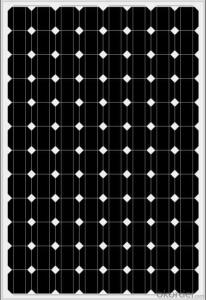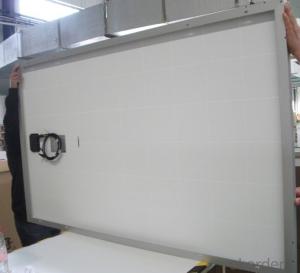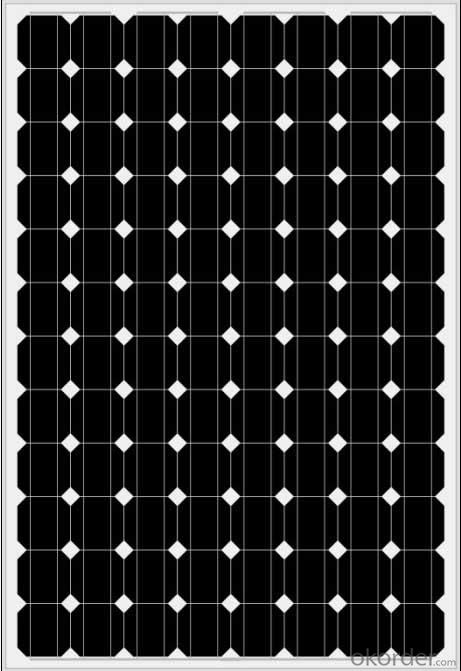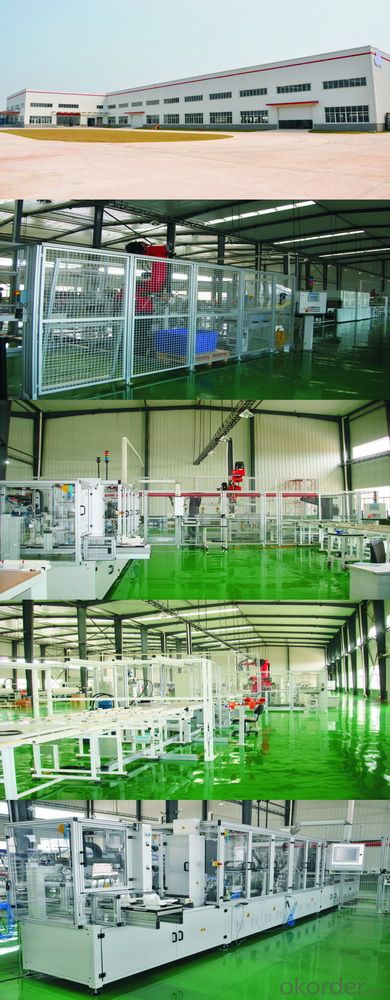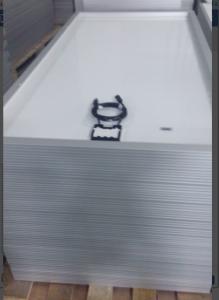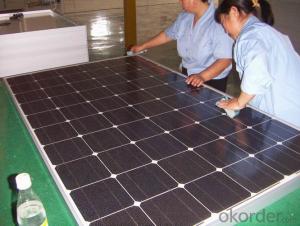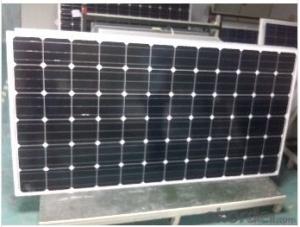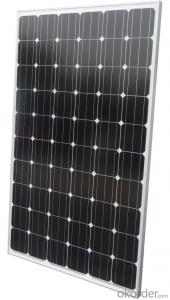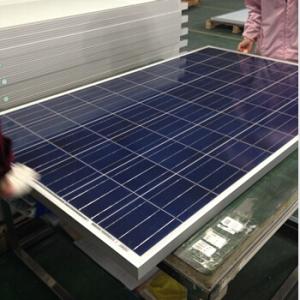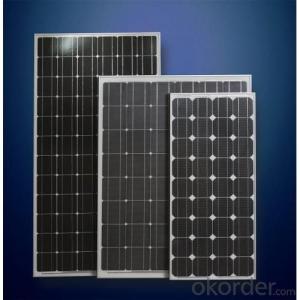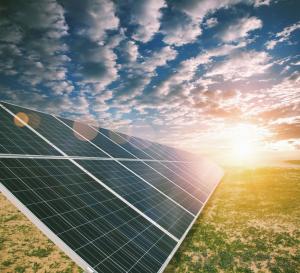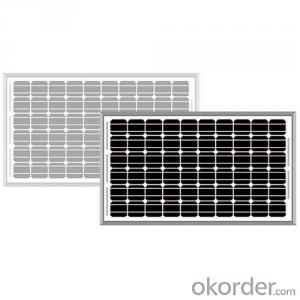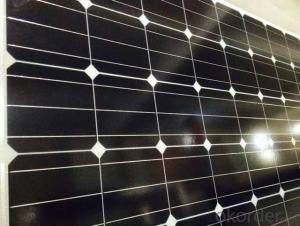Solar Panels Charlottesville - Monocrystalline Solar Panels 260w
- Loading Port:
- Shekou
- Payment Terms:
- TT or LC
- Min Order Qty:
- 6 watt
- Supply Capability:
- 200000 watt/month
OKorder Service Pledge
OKorder Financial Service
You Might Also Like
Product Description:
Solar 260w Monocrystalline Series Panels
Introduction of Solar Monocrystalline Series Panels
PV Panel is designed for large electrical power requirements. It is the optimal choice for both on-grid and off-grid power systems. CNBM Solar panel offers high performance of power per square foot of solar array. Monocrystalline silicon(c-Si): often made using the Czochralski process. Single-crystal wafer cells tend to be expensive, and because they are cut from cylindrical ingots, do not completely cover a square solar cell module without a substantial waste of refined silicon. Hence most c-Si panels have uncovered gaps at the four corners of the cells.
Characteristics of Solar Monocrystalline Series Panels
I Long lifetime: ≥25 years; Less power decrease
II Good performance of preventing from atrocious weather such as wind and hails.
III Resisting moisture and etching effectively, not effected by geology.
Advantages of Solar Monocrystalline Series Panels
• CNBM Solar performance guarantees for 25 years
• 12 years guarantee for workmanship
• light and easy to transport
Specification:
Products Guarantee | 10 yrs free from defects in materials and workmanship |
Performance Guarantee | No less than 90% within 10yrs and no less than 80% within 25yrs |
Certificates | IEC, ISO, TUV, CE |
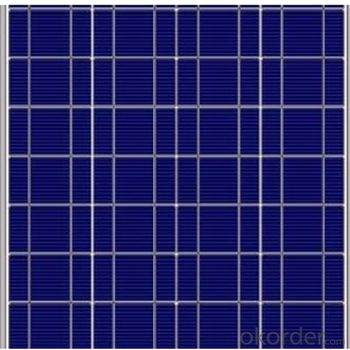
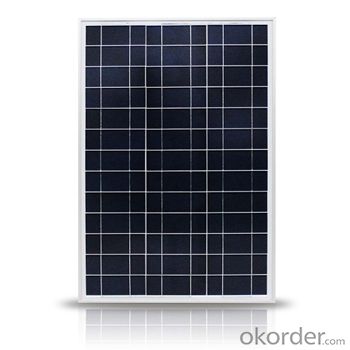
FAQ:
1. Can you tell me the parameter of your solar panels?
We have different series of cells with different power output, both from c-si to a-si. Please take our specification sheet for your reference.
2. How do you pack your products?
We have rich experience on how to pack the panels to make sure the safety on shipment when it arrives at the destination.
3. How long can we receive the product after purchase?
In the purchase of product within three working days, We will arrange the factory delivery as soon as possible. The perfect time of receiving is related to the state and position of customers. Commonly 7 to 10 working days can be served.
- Q: If we invest billions in green energy and put up thousands of square miles of black panels that give off radiant heat couldn't that significantly cause more warming, not to mention the energy required to even make them?
- apparently okorder / <== this is a more lighthearted link. so the problem is not, what color stuff is. the problem is, how much energy can the planet lose? as far as the solar panel, consider, if that same amount of energy fell on the roof, some would be reflected and some would be absorbed. if it falls on a solar panel, some of the energy will get converted to electricity. so there will be less that needs to be radiated and lost. therefore, when they're working, solar panels, even though they're black, produce cooling.
- Q: How do solar panels impact air pollution?
- Solar panels have a positive impact on air pollution as they produce clean energy without emitting harmful pollutants or greenhouse gases into the atmosphere. By replacing fossil fuel-based energy sources, solar panels help reduce air pollution and improve air quality, resulting in a healthier and more sustainable environment.
- Q: Hi, wanting to set up the most basic solar panel system for a cabin in the woods that has enough power to recharge four 2V car batteries during the daytime (i am assuming; we want to run a mini fridge maybe a stove and a few lights at night off the batteries and be able to run it all just off solar during the day) It also needs to be able to power some simple tools during the day... Experience would be absolutely amazing since alot of the info on solar paneling is either really dumbed down, or ridiculously confusing.As of right now I am looking at a 3 panel (45watt in all) solar kit that needs a 300w inverter.... is this sufficient for my power needs? I am just a little perplexed, thanks so much!
- if the cabin is in the woods it is unlikely to get enough sun to power solar panels 45 watts will not even power a light bulb and although it will trickle charge a battery it will not charge then enough over daytime for much else, most tools are a minimum of 550 watts, you really need to be in arizona for solar power to contribute effective wattage
- Q: I was thinking of having some installed on our rooftop and was wondering if it would be worth the cost? The house is located in Sac, Cali. The panels would face the sun 2 months out of the year and in the summer roughly 4 hours of straight sun.
- Solar panels are currently selling for between $4 and $6 per watt of rated power output. A typical panel that you might install on your roof would be rated for between 00 and 300 watts and therefore will cost between about $400 and around $500 or so. A complete solar power system also needs some other components and will have some installation costs and so the total installed cost of a solar system is typically in the range of $8 - 0 per watt of rated power. Most home sized systems are rated in the 000 to 0,000 watt range and therefore cost between about $8000 and $00,000 dollars to install. Many states offer rebates and tax savings that can reduce this cost by as much as 50%. These systems will typically generate between about $300 and $2500 worth or electricity per year. Solar panels are expected to last between 30 and 50 years and so these systems will likely generate between $9000 and $20,000 worth of electricity over their life time in current dollars. This will vary widely though based on local electricity costs and may well increase greatly in the future if electricity rates rise.
- Q: Actually I want to convert my home electricity on Solar Panel to cut down electricity costI have 2 AC's, a refrigerator, 3 Television, 2 Computers, 4 Fans etc
- good okorder lots of good ideas there
- Q: Can solar panels be installed on a stadium or sports arena?
- Yes, solar panels can be installed on a stadium or sports arena. In fact, many stadiums around the world have already adopted solar panel systems to generate clean and renewable energy. These large roof areas provide ample space for solar installations, helping to offset energy consumption and reduce carbon emissions. Additionally, solar panels on stadiums can serve as a symbol of sustainability and inspire others to embrace renewable energy.
- Q: I have in mind a small solar panel that could be plugged into a wall socket. Do I need a converter or some kind of interference between the two power sources so there aren't any unpleasant explosions? I don't know much about this sort of thing so please be nice.
- No a solar panel puts out DC voltage like a car battery and you house uses Ac voltage generated voltage yes you need a converter to use the dc on an ac unit depends on the Amperage out put of the solar panel
- Q: Can solar panels be installed on a theme park or tourist attraction?
- Yes, solar panels can be installed on a theme park or tourist attraction. In fact, many theme parks and tourist attractions have started to incorporate solar panels as a way to generate clean and sustainable energy. Solar panels can be installed on rooftops, parking lots, or even as part of decorative structures within the park. This not only helps to reduce the environmental impact of the attraction but also serves as a visible display of the commitment to renewable energy, inspiring visitors to consider sustainable practices in their own lives.
- Q: I want to replace my electricity with solar and wind. I live just right outside the city, the roof about 000 square feet. How many windmills/solar panels would it take to get me off the power grid?
- I live in the Southwest where the sun shines almost every day. I got a quote for Solar system to produce about enough to cover my annual usage. My annual average electrical usage costs about $2300, or about $90/MO. The system costs around $30,000 but I can get rebates and some of your tax dollars in subsidies to bring my cost down to under $20,000. I can borrow $20,000 for 3 years at 7% and pay $95/MO, so in 3 years I will have the system paid for. As you can see, I don't start Saving any money for a long time. Maybe the rates will go up in later years which will help, but My friends that have solar systems tell me things like controllers go bad over time and they cost like $3000. Will it ever pay for itself? Maybe. Please note. This still does not get me off the grid. This system will not support things like an electric stove, air conditioning, Pool pump running, etc. so I still need the grid for when these operate and my usage peaks. If I installed a system that would totally support everything 24/7 the cost would be astronomical. If you live in the east, midwest, or NW where you have cloudy days, your economic calculations will be much less favorable I would think, unless your power costs are much higher than mine..
- Q: I have an off-grid 24volt existing system using 8 x 80 watt 2volt, wired at 24volts, mono solar panels with deep cycle batteries,operating now. I have been given a 240 2volt polly cryst. panel. Can I add this panel to existing panels as above. Thank you, dumb solar man
- Assuming that you have / will upgrade wiring sizes to carry the extra wattage, that the new total wattage resulting from the addition doesn't overload any existing charge controller, diodes and / or inverter you have installed, then paralleling it straight into one of the other 2 volt groups should do nothing but add current to the system. True, it will be somewhat imbalanced, but it will work. Your other options would be to reconfigure everything down to it's native 2 V configuration which will raise current and lower voltage, with the additional panel creating the additional current to raise the wattage or to put it in series with the other 4 panel clusters so that you would get 36 V and additional current to account for the raised wattage. One last approach might be to set it up on another battery bank of it's own (small and at 2 V) to then connect to the same inverter. You'd be getting more power and storage capability that way, sort of a partial backup system, really, that will take some of the load off the other components to help extend their useful lives and get a bit more flexibility into it as well. The choice is yours here. That is all the ways that the system can be connected in, assuming everything in the first sentence checks out;-) It's difficult to make a recommendation without knowing what other components are in use and what the maximum ratings they carry are. Just remember that parallel connections add current and voltage stays the same, series connections add voltage and the current remains the same and you can figure out what to do with this thing to help you if you stay within maximum ratings for the charge controller, diodes and / or inverter involved. Good luck and stay safe!
Send your message to us
Solar Panels Charlottesville - Monocrystalline Solar Panels 260w
- Loading Port:
- Shekou
- Payment Terms:
- TT or LC
- Min Order Qty:
- 6 watt
- Supply Capability:
- 200000 watt/month
OKorder Service Pledge
OKorder Financial Service
Similar products
Hot products
Hot Searches
Related keywords
